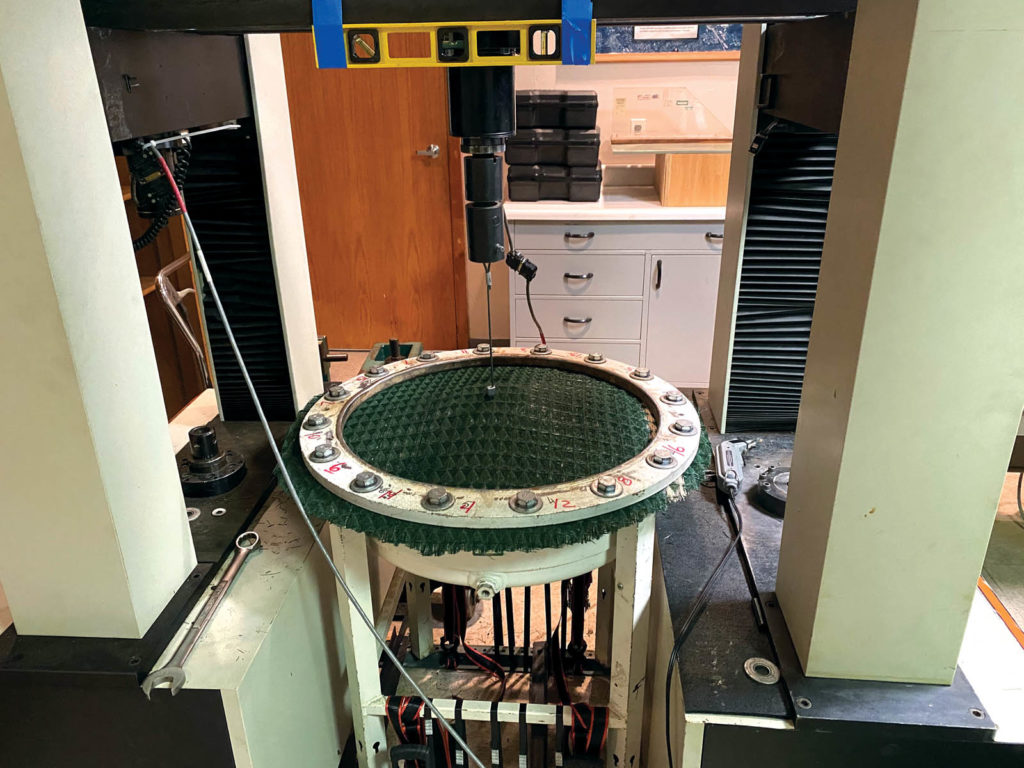
Connections can have a significant impact on the performance of exposed geosynthetic systems. The connection must be considered as a limiting strength factor and evaluated by the same performance standards as the material alone. If used in critical structures with design lives of more than 30 years, the geosynthetic and its connections must be evaluated for limitations, such as ultimate tensile strength. Anchored connections can be secured by a variety of techniques. The Geosynthetic Institute (GSI) has developed a new test method that looks at both the mobilized anchor strength in the field and connections in the lab of exposed geosynthetics as a means of evaluating the factors that affect their performance.
This test has applicability to anchored geosynthetic systems (AGS), first proposed by Koerner (1984) for the stabilization of slopes. AGS provides in situ stabilization of soil slopes by combining a surface-deployed geosynthetic with an anchoring system of driven reinforcing rods or short cable tiebacks. Installation of the system involves tensioning a geosynthetic over a slope’s surface by driving anchors through the geosynthetic at a given spacing and distance. By tensioning the geosynthetic over the slope’s surface, a compressive load is applied to the slope. Benefits of AGS are as follows: (a) increased soil strength due to soil compression; (b) increased compressive loading on potential failure surfaces; (c) soil reinforcement through soil nails or anchors; (d) halt of soil creep; (e) erosion control; and (f) long-term soil consolidation. AGS can be used not only on slopes, but also for canals, channels and levees.

Anchored geosynthetic technology also lends itself well to exposed geomembrane covers (EGCs). They have been used on landfills in place of more traditional soil-covered geomembranes since the 1990s (Richardson 2000). The design details and economic benefits of not using a soil cover have been well documented. While EGCs are temporary, they do provide improved landfill gas capture; they reduce the amount of stormwater that infiltrates into the landfill, which creates additional leachate; and they reduce potential erosion. The lateral expansion mode of operations at most landfills and the creation of interim slopes that may be exposed for years prior to receiving additional waste present an opportunity for EGCs that need to be anchored.
Both Giroud et al. (1995) and Wayne and Koerner (1988) emphasize the need for such a test protocol. It is shocking to see how strong many of our exposed geosynthetics are when tested in this configuration. Many high-performance turf reinforcement mats (HPTRMs) (used for AGS) and some reinforced geomembranes (used for EGCs) are stronger than the cables, rods and connections from which the anchors or soil rails are made. These test methods will lead to the advancement of this technology and allow us to design better systems.
The use of exposed geosynthetics will increase over the next decade with more high-survivability and durable geosynthetics that can withstand harsh environmental conditions. This new test method provides a means of evaluating restraints as a typical design feature for such systems and is an alternative to swales and anchor trenches.
References
Giroud, J. P., Pelte, T., and Bathhurst, R. J. (1995). “Uplift of geomembranes by wind.” Geosynthetics International, 2(6), 897–952.
Koerner, R. M. (1984) “Slope stabilization using anchored geotextiles: Anchored spider netting.” Proc., 1st ASCE Geotechnical Conf. Central PA Section, Harrisburg, Pa., 115–133.
Richardson, G. N. (2000). “Exposed geomembrane covers: Part 1 geomembrane stresses.” Geotechnical Fabrics Report, 18(7), 22–27.
Wayne, M. H., and Koerner, R. M. (1988). “Effect of wind uplift on liner systems.” Geotechnical Fabrics Report, 6(4), 21–25.
 TEXTILES.ORG
TEXTILES.ORG


